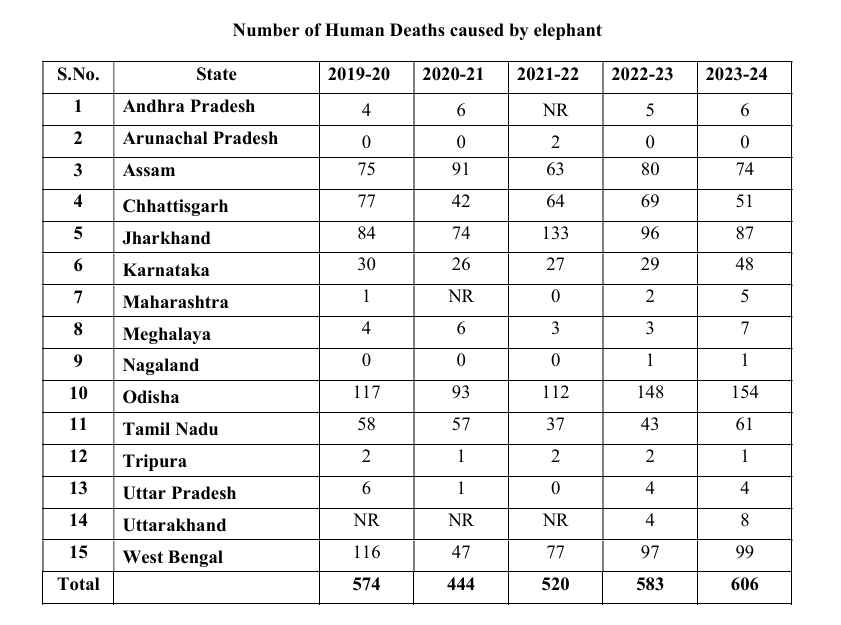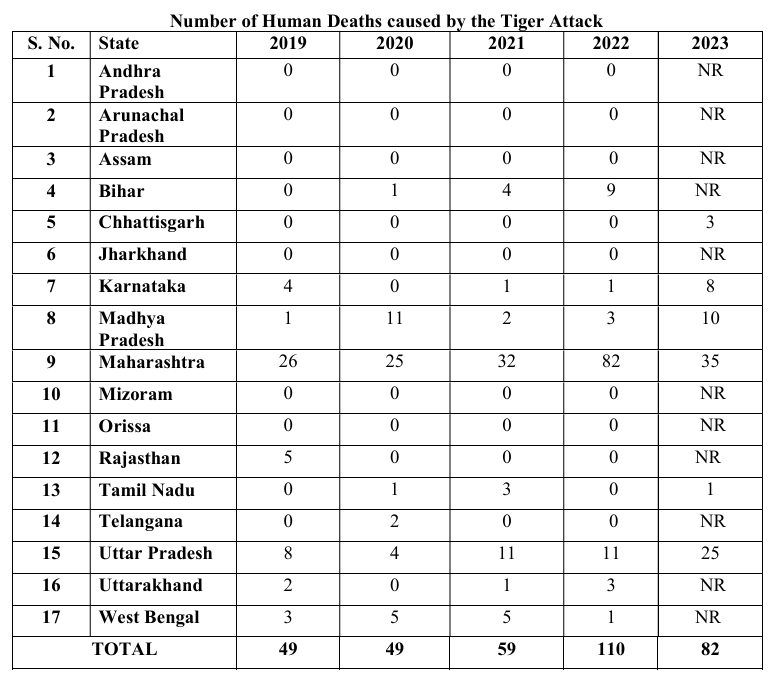
The Union Government on Monday reported an alarming rise in the number of deaths caused by wild animal attacks in Kerala over the past five years. The data, presented in the Lok Sabha, showed the rising cases of human-wildlife conflict, particularly involving elephants, tigers, and leopards in the southern state. The government has also reported an overall spike in deaths caused by tigers and elephants in the country since 2019.
In response to an unstarred question by MPs K Radhakrishnan and Anto Antony, the Minister of State in the Ministry of Environment, Forest and Climate Change, Kirti Vardhan Singh, provided detailed statistics on fatalities caused by wild animal attacks in Kerala. The report disclosed that from 2019 to 2024, a total of 486 people lost their lives due to these incidents.
Year-Wise Deaths in Kerala
The overall human deaths caused by wild animals in Kerala were at 92 fatalities in 2019-20, 88 in 2020-21, 114 in 2021-22, 98 in 2022-23, 94 in 2023-24. Overall the state has witnessed 486 deaths between 2019 and 2024.

Year-On-Year Rise In Human Deaths Caused By Elephants And Tigers
The response also included a detailed breakdown of human deaths caused by elephants and tigers across states.


Union Govt Enhances Compensation for Wild Animal Attack Victims
To address this growing issue, the Ministry stated that it has significantly increased the ex gratia relief for victims. As of December 2023, the compensation for death or permanent incapacitation due to wild animal attacks has been doubled from ₹5 lakh to ₹10 lakh. Additionally, grievous injuries will receive ₹2 lakh and minor injuries will be compensated with up to ₹25,000 for treatment costs, the response informed. The loss of property or crops will be compensated according to the norms prescribed by the respective State/UT governments.
“The government’s enhanced ex-gratia relief measures and the issuance of comprehensive guidelines reflect our commitment to mitigating human-wildlife conflicts and ensuring prompt support for affected individuals,” stated Kirti Vardhan Singh, Minister of State in the Ministry of Environment, Forest and Climate Change.
The protection and management of wildlife are primarily the responsibilities of State Governments and Union Territory Administrations, the response noted. “The Ministry provides financial assistance to States/UTs for conservation of wildlife and its habitats under the Centrally Sponsored schemes – ‘Development of Wildlife Habitats’, ‘Project Tiger and Elephant’. It includes payment of ex-gratia relief for loss of life and property caused by wild animals,” it stated.
On 6 February 2021, the Ministry issued an advisory to all States and UTs, recommending measures to handle human-wildlife conflict. This includes coordinated interdepartmental action, identification of conflict hotspots, adherence to Standard Operating Procedures, establishment of rapid response teams, and the formation of State and District level committees to review ex gratia relief and ensure expedited payments.
Furthermore, guidelines issued on 3 June 2022, advise States and UTs to use the Disaster Management Act, 2005 for dealing with human-wildlife conflicts. This encompasses rescue and relief operations, law and order management, and the provision of ex gratia relief. On 21 March 2023, species-specific guidelines were released to mitigate conflicts with elephants, gaurs, leopards, snakes, crocodiles, rhesus macaques, wild pigs, bears, blue bulls, and blackbucks. The guidelines also address cross-cutting issues such as forest-media cooperation, occupational health and safety, and crowd management during conflict situations, as per the ministry.






